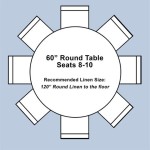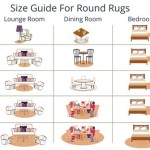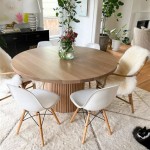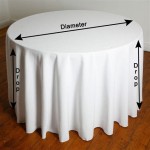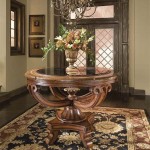What Is The Use Of Table Napkin In Setting?
Table napkins, frequently overlooked in the rush of meal preparation and consumption, play a significant role in dining, extending beyond simple cleanliness. Their presence influences formality, hygiene, and overall dining etiquette. Understanding the nuanced uses of table napkins in setting enhances the dining experience for both hosts and guests.
Hygiene and Cleanliness
The primary function of a table napkin is to maintain hygiene during a meal. Before the advent of readily available disposable tissues and paper towels, napkins served as the principal method for cleaning hands and faces at the table. While disposable options exist today, the table napkin, often made of cloth, continues to offer a more refined and environmentally conscious approach to staying clean during dining.
Specifically, napkins are used to blot the mouth, preventing food residue or sauces from transferring onto clothing or tableware. A gentle dab, rather than a vigorous wipe, is the appropriate technique. This action helps to maintain a presentable appearance throughout the meal. Furthermore, napkins can be used to discreetly clean fingers if they become soiled, particularly when eating foods that are handled directly.
The placement of the napkin also contributes to hygiene. Upon being seated, the napkin should be placed on the lap. This placement serves as a barrier, catching any accidental spills or crumbs that might fall during the meal. It protects clothing and contributes to a cleaner dining environment. Leaving the napkin folded on the table signifies that the meal has not yet commenced, or that the diner has temporarily excused themselves and intends to return.
Modern usage often incorporates the use of smaller beverage or cocktail napkins alongside larger dinner napkins. These smaller napkins are intended for use with drinks, absorbing condensation and preventing water rings on furniture. They also offer a convenient means for guests to wipe their hands after holding a beverage. The presence of these extra napkins reinforces the host's attention to detail and consideration for their guests' comfort and the protection of their furnishings.
Formal Dining Etiquette and Presentation
Beyond hygiene, table napkins are integral to formal dining etiquette. Their size, material, and placement often denote the level of formality associated with the meal. A crisp, folded linen napkin signals a higher degree of formality compared to a smaller, less structured paper napkin. The choice of napkin reflects the host's intention and sets the tone for the dining experience.
The placement of the napkin can vary depending on the formality of the setting. In more relaxed settings, the napkin is often placed to the left of the forks or on the plate itself. However, in formal settings, the napkin may be elaborately folded and placed in the center of the place setting, sometimes even presented in a napkin ring. The complexity of the folding indicates the care and attention that has been invested in creating a memorable dining experience.
Proper napkin etiquette dictates specific rules of usage. As mentioned, the napkin is unfolded and placed on the lap shortly after being seated. If leaving the table temporarily, the napkin should be placed on the chair, indicating the diner's intention to return. At the conclusion of the meal, the napkin is loosely folded and placed to the left of the plate, never on the plate itself. This signals to the waitstaff that the diner has finished eating and the table can be cleared. Crumpling the napkin is considered impolite and suggests dissatisfaction with the meal or service.
The color and design of the napkin can also contribute to the overall presentation of the table. Choosing napkins that complement the tablecloth, dinnerware, and other table decorations enhances the aesthetic appeal of the setting. Neutral colors, such as white or ivory, are generally considered appropriate for formal occasions, while more vibrant colors or patterns can be used for informal gatherings. The strategic use of color and design can create a cohesive and visually appealing dining environment.
Signaling and Communication
While seemingly passive, the table napkin subtly communicates intentions and status during a meal. The way a napkin is handled and positioned conveys messages to both the host and the waitstaff, contributing to a smoother and more efficient dining experience.
As previously noted, the placement of the napkin on the chair signifies a temporary absence from the table. This prevents the waitstaff from prematurely clearing the diner's place setting. Conversely, placing the napkin to the left of the plate at the end of the meal signals that the diner has finished and the dishes can be removed. This simple gesture avoids the need for direct verbal communication, allowing for a more discreet and unobtrusive dining experience.
In some cultures, the manner in which a napkin is folded can carry specific meanings. While not universally recognized, elaborate napkin folds can sometimes denote honor or respect for the guest of honor. In certain formal settings, designated waitstaff may be trained to recognize and interpret these subtle cues, further enhancing the overall dining experience. Though less common in modern dining, these historical practices highlight the potential for napkins to serve as subtle forms of communication.
The absence of a napkin can also send a message. In a formal setting, the lack of a napkin might indicate an oversight on the part of the host or waitstaff. It suggests a lack of attention to detail and can detract from the overall dining experience. Conversely, in a very informal setting, the absence of a formal napkin may be interpreted as a signal of relaxed and uncomplicated dining. The interpretation of a napkin's presence or absence depends heavily on the context of the meal and the expectations of the diners.
Furthermore, a guest might subtly use a napkin to indicate a need. For example, discreetly using a napkin to signal needing assistance with a spill or mess can be less disruptive than verbally requesting assistance. This allows the guest to maintain composure and avoid drawing unnecessary attention to themselves, preserving the ambiance of the dining environment.
In essence, the table napkin is more than just a piece of cloth or paper. It is a functional tool, a symbol of etiquette, and a subtle form of communication, all contributing to the overall quality and experience of dining.

How To Set A Formal Table

How To Set A Table With Napkins Your Guide Beautiful

Where Does The Napkin Go Place Setting Etiquette Teacher Blog

How To Set A Table With Napkins Your Guide Beautiful

Table Etiquette The Place Setting Rooted In Foods

How To Set A Table 3 Ways The Home Depot

Where Does The Napkin Go Place Setting Etiquette Teacher Blog

8 Ways To Use A Napkin With Proper Table Etiquette Wikihow

Tips For Matching Your Napkin And Tablecloth Colors Dust Tex

How To Set A Table For Casual And Formal Dining
Related Posts

